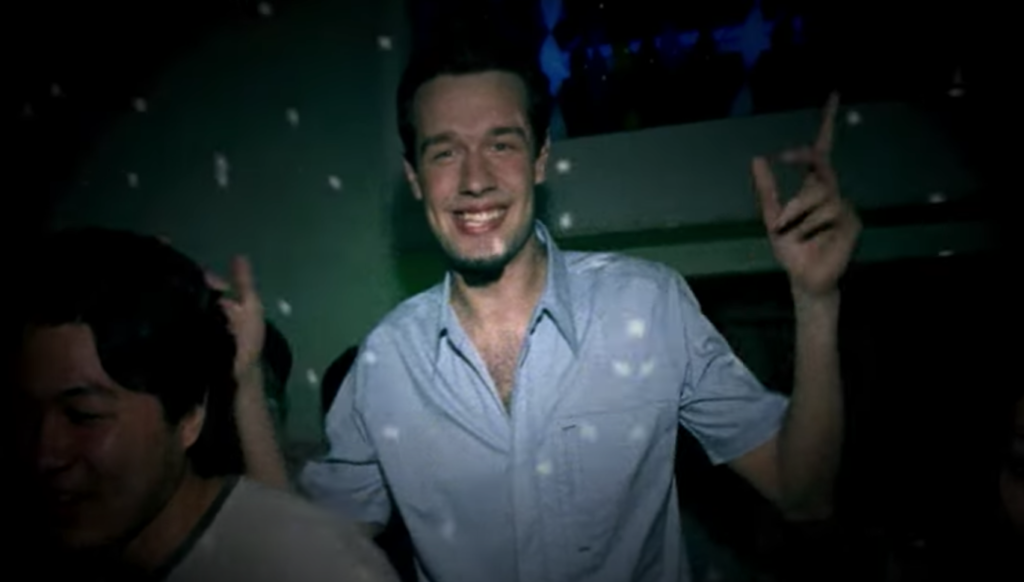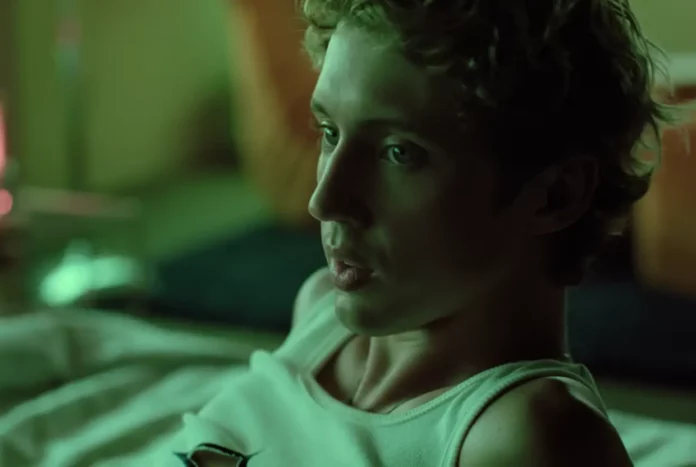Troye Sivan had a whirlwind of a week in early November 2023. Beginning with his first-ever two Grammy nominations, it was capped off by doppelgänger Timothée Chalamet playing a “sleep demon” version of him in an SNL episode. It’s “a weird [expletive] dream,” he later responded to the skit.
It was the same reaction on my end, having maintained for years that Sivan would have made a great Elio Perlman in Call Me by Your Name, a breakout role for Chalamet that led to his Oscar nomination. The film, released in early 2017 and morphed into a sensation as soon as 2018 rolled around, coincided with the lead-up to Sivan’s sophomore set, Bloom, released in August of that year.
Both works deal with the rush of a — you guessed it — blooming young romance and all the coming-of-age pangs that it entails. While the scenario took a teary-eyed turn for Chalamet’s Elio, Bloom ended on a high note, finding Sivan all loved up with then-boyfriend Jacob Bixenman (also the principal photographer for the Bloom era promotional shoot), whose giggle appears in the soaring, stirring closer “Animal”; his rendition of the song on The Late Show with Stephen Colbert remains one of the very rare occasions of a same-sex love song being performed live on American TV.
Coming Out Again
Troye Sivan manages to evoke both nostalgia and hope for the future in the same breath
Bloom notably marked the first time Sivan put on a sexier, brasher front, all bleached hair, skin-revealing outfits, and two-step wiggling. The video for lead single “My My My!” finds him cavorting and sashaying in an empty warehouse flanked by an array of shirtless men, a far cry from the fresh-out-of-the-closet angst of his Blue Neighbourhood days, while the title track’s video doubles down on the outré by showcasing Sivan all dolled up and giving faces in a variety of dresses and other drag paraphernalia, simultaneously channeling 80s-era pop troubadours such as Boy George and Annie Lennox.
By this point, Sivan had netted a couple of Top 30 hits on mainstream Billboard charts via “Youth” and “Wild,” performed at the Billboard Music Awards, and was seemingly on track to a proper mainstream breakout. Although released in the thick of #20gayteen, Bloom was not the star-making turn that it should have been and was most likely envisioned to be: “My My My!” barely cracked the lower rungs of the Billboard Hot 100, not even an SNL gig and an Ariana Grande feature managed to boost his profile or the album’s performance significantly despite its US top five debut.
The intervening five years between Bloom and Something to Give Each Other would have been a momentum killer were it not for a string of releases that kept Sivan’s name afloat, whether in collaboration with Charli XCX and Tate McRae or solo (the pandemic-era banger “Take Yourself Home” was a career highlight and “Angel Baby” subsequently turned out to be his breakthrough hit across Asia, perhaps owing to the song’s yearning sappiness), most of which fared better than any of the Bloom singles in the US. It doesn’t hurt either that Sivan stayed booked with high-profile acting gigs during the interim.
And then “Rush” breezed in.
Released in the thick of summer 2023, “Rush” set the interwebs (mostly its homosexual populace) ablaze with its — let’s not mince words here — gay-as-hell visual, featuring a sea of sweaty, horny, writhing, dancing bodies of queer persuasions just sexily and stylishly having the time of their lives in a Berlin wasteland … and a glory hole. It’s also the first video where Sivan executes a full-on choreography to match the song’s hard-faced thumpery, not unlike the hypnotic relentlessness of Spiller and Sophie Ellis-Bextor’s early aughts house classic “Groovejet (If This Ain’t Love).”

For pop aficionados still high on Beyoncé’s and Kylie Minogue’s (and to some degree, Sam Smith and Kim Petras’) dancefloor escapades, “Rush” was the apt anthem to keep the post-pandemic parties going, its sheer, unapologetic gayness both visually and lyrically (Sivan has never shied away from using same-sex pronouns since his debut) being the big, fat cherry on top, ready for smacking at your disposal. It understood and delivered the assignment with flying colors, in no time becoming Sivan’s most successful single and garnering him a slew of industry awards.
In all honesty, “Rush” didn’t do it for me like that at first, fluctuating between the ever-loosening grip poptimism has on me and still appreciating the track’s undeniable quality. But it all changed when second single “Got Me Started” dropped. Enthralled by the song’s instantly infectious, UK garage-inflected production and its jaw-droppingly ingenious video (shot in Bangkok and featuring almost exclusively local talents without tokenizing them, a commendable move for a Western pop act), I had the song on endless repeat for weeks; soon after, it is my most played song ever on Spotify.
The genius of “Got Me Started” lies beneath its surface too. Since debuting with 2014’s “Happy Little Pill,” Sivan’s trademark has been pairing yearning, melodic vocals with big, booming beats, creating a delectable contrast that ensures catchy immediacy for the casual listeners but also stays true to his propensity for sad music. While the likes of “My My My!” and “Rush” are obvious bids to play the big pop game, “Got Me Started” is, in many ways, a classic Troye Sivan track and manages to evoke both nostalgia and hope for the future in the same breath.
For me, “Got Me Started” evokes memories of growing up in the 2000s with spiritually similar songs like Frou Frou’s “Breathe In,” Anggun’s “Counting Down,” and Natalie Imbruglia’s “Beauty on the Fire” as I fantasized about how life would be in my 20s, eager to bask in all the cosmopolitan delights that Jakarta had to offer. I nearly teared up too upon reading Sivan’s admission that he began writing Something after a particularly inspiring hook-up, an instant reminder of those adolescent fantasies eventually being crushed by a series of heartbreaks, rejections, and other unrelated existential revelations as my actual 20s unfolded.
Plenty More To Give And Take
Sivan one-ups the argument and proves that [loneliness] is where the real magic in being queer lies … happiness may come in flashes and glimpses, but the ephemerality of it all doesn’t make it less meaningful or worthy
With initial offerings of this caliber, I had initially expected Something to be an out-and-out dance record featuring one banger after another. It came as something of a surprise then — a letdown, if I may be honest — that “Rush” and “Got Me Started” are mere outliers; the remaining eight tracks are essentially solid-to-middling midtempos that never quite reach their heights even with moments of brilliance scattered throughout.
The album’s midsection is an ample showcase: building on an inspired sample of Jessica Pratt’s deep cut “Back, Baby,” “Can’t Go Back, Baby” charts the aftermath of an affair in a stunningly propulsive fashion that segues into “Got Me Started” with effortless aplomb before being picked up by “Silly”’s sleek lounge beats, recalling the French downtempo cool of Daft Punk and Stéphane Pompougnac.
If anything, I would say Something’s true strengths lie in its production: it’s in “Rush”’s distorted vocal hook (which imparts a feeling of — you guessed it again — rush), “Got Me Started”’s pitched-up chorus (which sounds all the more heart-rending slowed down), the sad robot effect in third single “One of Your Girls,” the rave-tinged outro of “Honey,” or how the album title is weaved into not one or two but three tracks.
Unfortunately, mixing board trickeries do not cover up the feeling that Something is rather underdeveloped and a tad too slight: the extended version of “Rush,” for instance, does not prolong its main mix’s instrumentation but instead breaks it down to an airy, near-acapella configuration. Similarly, “In My Room” plods along to its chill R&B vibes without much punch (the most interesting and irritating thing being Guitarricadelafuente’s Spanish parts that make up its majority, with Sivan clumsily ad-libbing like the reverse of Gloria Pritchett’s “American” accent).
“Still Got It” takes cues from past break-up ballads like “Talk Me Down” and “The Good Side” with neither’s sticky melodies nor production wizardry. Truly, the bonkers breakbeat coda of “Take Yourself Home” is sorely missed here and would have better rounded out the album’s otherwise middling sequence of tracks.
Thankfully, the likes of “What’s The Time Where You Are?” (complete with its “That’s The Way Love Goes” reference, further reinforcing the Janet Jackson influence) and album closer/The 1975-lite “How to Stay with You” round things out nicely, with the latter containing possibly the album’s most iconic line: “I turn my bussy out.” Is a remix with Lil Nas X in the pipeline?
But does it matter that Something isn’t quite giving the way I thought it would? Not really. It was Sivan’s first LP to debut at number one on his home turf and in the UK Top 5 — shockingly, it became his lowest-charting album in the US.
It’s as if the songs themselves take a backseat to Something’s overarching theme: most queer people know the pains of pining for otherwise heterosexual-identifying folks (and being used by them) or the thrills of frequently hooking up to get over an ex, being ridden with memories but also desperately wanting to move on, and then feeling awkward while attempting to move on with someone new, still wounded and haunted by the experience with said ex, all in ways that are specifically, inexplicably queer.
Nearly a decade into his public renown as a recording artist, I find this direct, unflinching honesty to be a driving factor in Sivan’s longevity and good graces with the general public, an important asset in the post-new boring age no doubt born out of his YouTube origin story. As such, his unabashed gayness almost serves as a footnote to his overall artistry, although not at all watered down or served too palatably; it certainly doesn’t hurt either that he’s blessed with the cute White boy next door looks, a yaoi character of sorts coming to life. And, of course, the boy knows how to write an effective pop song or two.
Three studio albums deep, only now is Sivan hitting his stride after years of being relegated to the ‘gay singer’ bracket — consequently being “gay famous” at best, as per the instantly quotable SNL skit — and in his horniest, most flagrantly gay era (“I see love in every space / I see sex in every city, every town,” goes “Honey”’s opening verse). His biggest era has probably yet to come.
***
Having lived with Something for some time now has also made me realize more than ever the veracity of what an older gay man once said to me about how the freedom and carefreeness of queer life is often compensated with loneliness, even isolation. Over the course of the album, Sivan one-ups the argument and proves that it’s where the real magic in being queer lies: connections don’t have to last a lifetime, happiness may come in flashes and glimpses, but the ephemerality of it all doesn’t make it less meaningful or worthy. Most people don’t even try to connect or be happy at all, let alone give anything to each other.

